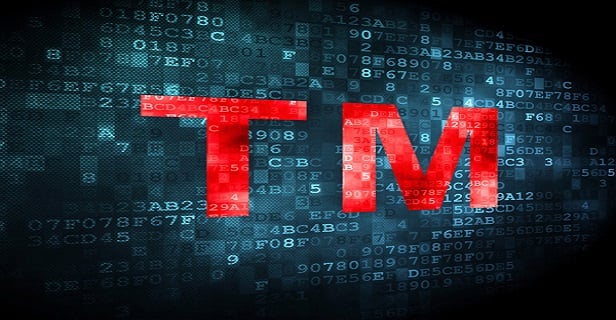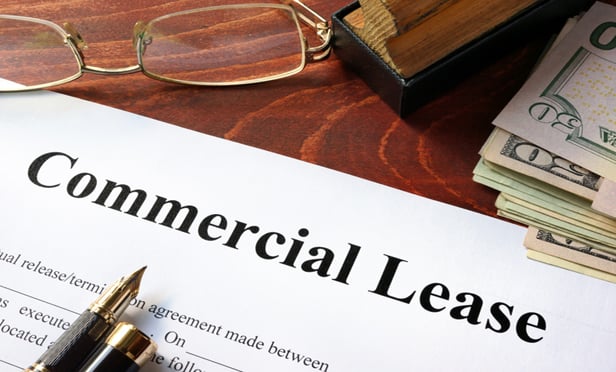Features

Update On Preference and Fraudulent Transfer Litigation
The appellate courts have been busy explaining or clarifying preference and fraudulent transfer law. Although novices may think the Bankruptcy Code (Code) is clear on its face, imaginative counsel have found gaps in the statute and generated rafts of litigation since the Code's enactment in 1979. Recent appellate decisions, summarized below, show that courts are still making new law or refining prior case law.
Features

Protecting a Trademark Licensor's Rights In a Bankruptcy Case
A recent bankruptcy case from the District of Delaware underscores the need for a trademark licensor to be alert to filings made in its licensee's bankruptcy case that may require prompt action by the licensor to protect its valuable rights under a license agreement.
Features

Commercial Lease Assumption Under Chapter 11 Bankruptcy
Given the potentially harsh consequence of failing to timely assume a vital lease, a Chapter 11 debtor must be vigilant to avoid a forfeiture. It is important to know, however, that all might not be lost even if the debtor misses this deadline.
Features

Supreme Court Finds 2017 Bankruptcy Fee Increases Unconstitutional But Leaves Remedy Unclear
The Supreme Court concluded that because the 2017 amendments exempted debtors located in two States, it was not "uniform" as it did not apply equally to all debtors regardless of where they were situated and, therefore, the statute was unconstitutional.
Features

It May Not Be Too Late to Assume That Lease
Given the potentially harsh consequence of failing to timely assume a vital lease, a Chapter 11 debtor must be vigilant to avoid a forfeiture. It is important to know, however, that all might not be lost even if the debtor misses this deadline.
Features

Second Circuit Insulates Innocent Friend from Corporate Debtor's Fraudulent Transfer Liability
The defendant "was a 'mere conduit' of [a] fraudulent transfer and cannot be liable to the bankruptcy estate for funds she never knew about," held the U.S. Court of Appeals for the Second Circuit in In re BICOM N.Y., LLC.
Features

Court-Based Student Loan Management Programs Can Facilitate Repayment of Debt Under Chapter 13
While bankruptcy traditionally has been seen as a challenging pathway for debtors with student loans, court-based student loan management programs have been adopted to facilitate the repayment and resolution of student loan debt within the Chapter 13 bankruptcy process.
Features

Third Circuit Rejects Side-Switching Disqualification Claim
Conflicts of interest among clients are a chronic problem for law firms with many clients. How law firms address the problem — and they must — is what the Boy Scouts of America decision shows.
Features

Stipulation That Resolves Entire Amount Must Reflect Intent of Parties
The Ninth Circuit recently affirmed a lower courts' rulings that a stipulation between the IRS and a bankruptcy trustee, which allowed the IRS's priority tax claim, did not prevent the IRS from collecting nondischargeable tax debt above the agreed amount in that stipulation.
Features

Increased Bankruptcy M&A Activity Should Provide Attractive Opportunities for Lenders
It seems clear that bankruptcy filings inevitably will increase in the near future, because of rising interest rates, pandemic-related micro-economic forces, global strife, and other macro-economic factors and their continuing strain on the global economy and individual businesses. Consequently, strategic buyers and private equity sponsors should find expanding opportunities to purchase distressed businesses out of bankruptcy.
Need Help?
- Prefer an IP authenticated environment? Request a transition or call 800-756-8993.
- Need other assistance? email Customer Service or call 1-877-256-2472.
MOST POPULAR STORIES
- The 'Sophisticated Insured' DefenseA majority of courts consider the <i>contra proferentem</i> doctrine to be a pillar of insurance law. The doctrine requires ambiguous terms in an insurance policy to be construed against the insurer and in favor of coverage for the insured. A prominent rationale behind the doctrine is that insurance policies are usually standard-form contracts drafted entirely by insurers.Read More ›
- The Brave New World of Cybersecurity Due Diligence in Mergers and Acquisitions: Pitfalls and OpportunitiesLike poorly-behaved school children, new technologies and intellectual property (IP) are increasingly disrupting the M&A establishment. Cybersecurity has become the latest disruptive newcomer to the M&A party.Read More ›
- A Lawyer's System for Active ReadingActive reading comprises many daily tasks lawyers engage in, including highlighting, annotating, note taking, comparing and searching texts. It demands more than flipping or turning pages.Read More ›
- Abandoned and Unused Cables: A Hidden Liability Under the 2002 National Electric CodeIn an effort to minimize the release of toxic gasses from cables in the event of fire, the 2002 version of the National Electric Code ("NEC"), promulgated by the National Fire Protection Association, sets forth new guidelines requiring that abandoned cables must be removed from buildings unless they are located in metal raceways or tagged "For Future Use." While the NEC is not, in itself, binding law, most jurisdictions in the United States adopt the NEC by reference in their state or local building and fire codes. Thus, noncompliance with the recent NEC guidelines will likely mean that a building is in violation of a building or fire code. If so, the building owner may also be in breach of agreements with tenants and lenders and may be jeopardizing its fire insurance coverage. Even in jurisdictions where the 2002 NEC has not been adopted, it may be argued that the guidelines represent the standard of reasonable care and could result in tort liability for the landlord if toxic gasses from abandoned cables are emitted in a fire. With these potential liabilities in mind, this article discusses: 1) how to address the abandoned wires and cables currently located within the risers, ceilings and other areas of properties, and 2) additional considerations in the placement and removal of telecommunications cables going forward.Read More ›
- The New York Uniform Commercial Code Comes of AgeParties in large non-consumer transactions with no connection whatsoever to New York often choose its law to govern their transactions, and New York statutes permit them to do so. What most people do not know is that the New York Uniform Commercial Code is outdated.Read More ›
